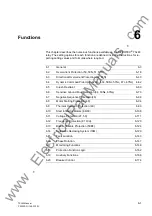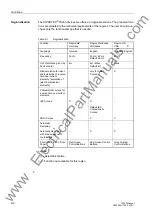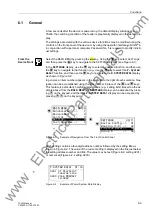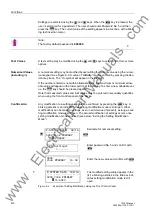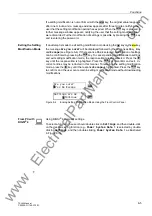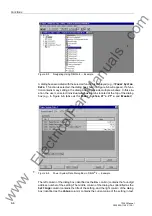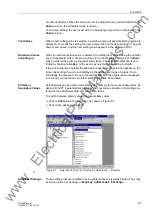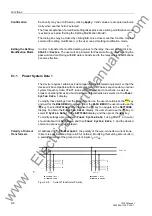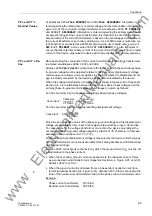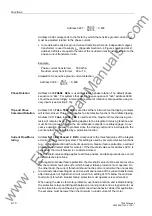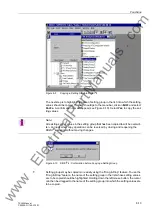
Configuration
5-51
7SJ63 Manual
C53000-G1140-C120-1
Figure 5-55
Dialog Window for Time Synchronization and Format in DIGSI
®
4
Here the user may select the time standard for internal time stamping by selecting
from the following modes:
The RTC runs, even when the auxiliary voltage is absent, by means of an internal bat-
tery. During the devices powering up, or if the auxiliary voltage drops, this RTC is the
synchronization source for the internal clock, independent of operating mode selected.
In “Internal” mode, the system time is controlled using only the RTC as the synchroni-
zation source. It may be set manually. The procedure for manual date/time setting is
given in Section 7.2.1.
If an external source is selected, only the selected synchronization source is used. If
the source fails, the internal clock continues unsynchronized.
If time synchronization is to take place via a control system, the option
,(&²
²
or
352),%86)06
must be selected (Figure 5-55).
When using radio clock signals, the user must take into account that it can take up to
three minutes after device startup or restored reception for the received time signal to
be decoded. The internal clock is not resynchronized until then.
Table 5-8
Operating Modes for Time Tracking
#
Operating Mode
Explanations
1
,QWHUQDO
Internal synchronization using RTC (pre-set)
2
,(& ²²
External synchronization using SCADA interface
(IEC 60870–5–103)
3
352),%86)06
External synchronization using PROFIBUS interface
4
,5,*%7LPHVLJQDO
External synchronization using IRIG B
5
'&)7LPHVLJQDO
External synchronization using DCF 77
6
SIMEAS Time signal
6\QF%R[
External synchronization using SIMEAS Sync. Box
7
3XOVHYLDELQDU\
LQSXW
External synchronization with pulse via binary input
www
. ElectricalPartManuals
. com

















